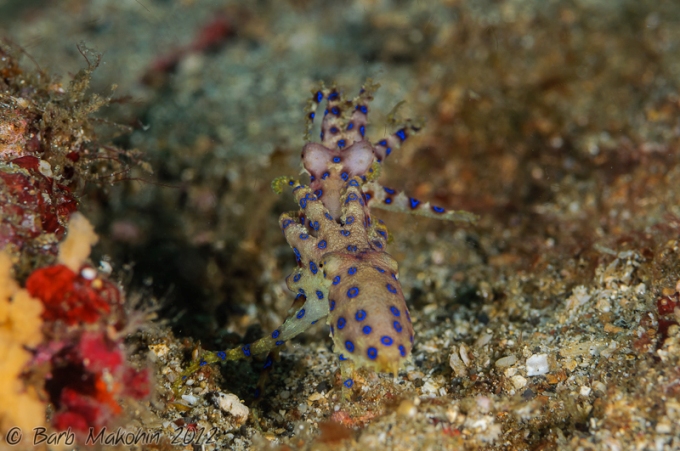Reproduction
 Like
all organisms, the Hapalochlaena lunulata needs to
eventually pass on its genes and reproduce. The octopus
does this using a specialized arm specifically designed
for reproduction called the hectocotylus (Overath).
The hectocotylus has a unique structure that is very
reminiscent of a spoon (Encyclopedia
of Life).
Like
all organisms, the Hapalochlaena lunulata needs to
eventually pass on its genes and reproduce. The octopus
does this using a specialized arm specifically designed
for reproduction called the hectocotylus (Overath).
The hectocotylus has a unique structure that is very
reminiscent of a spoon (Encyclopedia
of Life).
A male octopus ready to reproduce first attracts a mate by using the spots on its mantle and its ability to shift its body into unusual shapes to produce a vivid display of virility (Encyclopedia of Life) . The male then begins impregnating the female by quite literally fondling the female with the hectocotylus and releasing his sperm into the female's oviduct (Buncombe). The picture above shows the greater blue-ringed male octopus reproducing with the female octopus.
A funny aspect of this ritual is that the octopus can unintentionally grope a male octopus. All that happens is that the first male realizes that the second octopus is male and leaves to find a female to copulate (Sex identification).
Once the eggs are fully formed and laid, the female carefully protects the growing eggs over the course of six months (Aquarium of the Pacific). When the time comes for the eggs to hatch, the female dies of starvation because she does not eat for the whole six months (Buncombe). The newly-born octopuses actually have a slightly different way to live than the adults. The young are tiny enough to live like and be mistaken for plankton. Of course, as cephalopods, they posses a direct development path and the young can be observed as smaller versions of the adults (Encyclopedia of Life).
If you have any questions, please go to the Contact Us page or to learn more about the Hapalochlaena lunulata, please visit our list of references. If you want to see more beautiful pictures of the Hapalochlaena lunulata, visit our gallery page.
